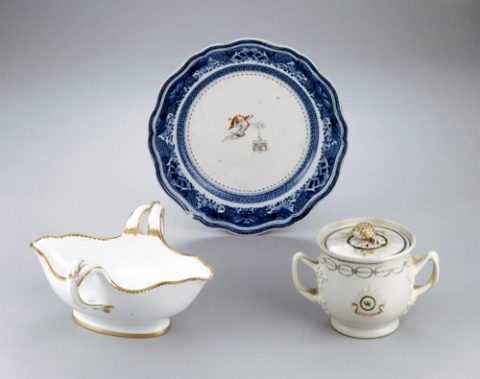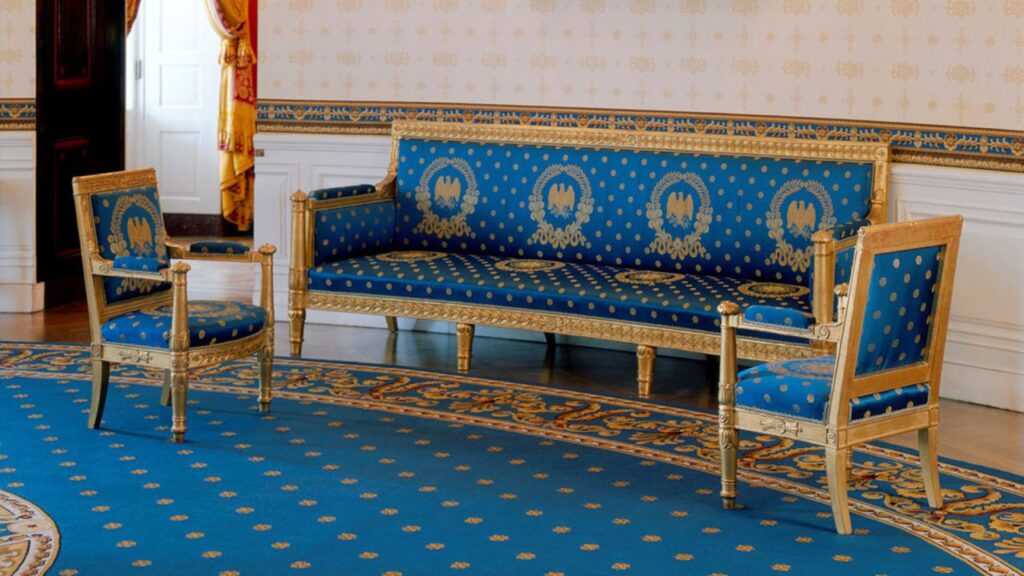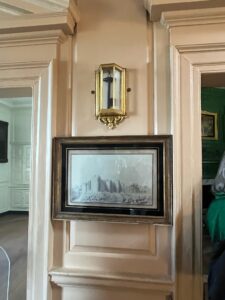“In truth, no two countries are better calculated for the exchanges of commerce. France wants rice, tobacco, potash, furs, and ship timber. We want wines, brandies, oils, and manufactures. There is an affection, too, between the two people, which disposes them to favor one another.”
-Thomas Jefferson to the comte de Vergennes, August 15, 1785
As trade between the United States and England deteriorated following the War of Independence, Americans increasingly looked to their allies in France for international exchange. George and Martha Washington were particularly fond of the French style, and that was reflected in the collection of objects at their home, Mount Vernon. This influence spread to other parts of the United States in the 18th and 19th centuries, which was the topic of the 2023 Mount Vernon Symposium.
The French-American Cultural Foundation was pleased to participate in this event as we increasingly explore French savoir faire as a deeply personal endeavor that reflects the creativity and dedication of the human spirit and connects our two countries.
While Americans might think of ‘social competence’ when they hear the term savoir faire, in France it describes something that is more meaningful and an important part of French culture and history. In France, savoir faire is professional competence learned by experience. It is used to describe a variety of trades and knowledge that are applied to careers in design and manufacturing, particularly those skills that require extensive hands-on learning and apprenticeships.
Savoir faire impacted early American interest in French objects, which was explored during the three-day event hosted at Mount Vernon in June.

Porcelain produced at the Sèvres Manufactory near Paris is a highly-desired collectors’ item. Since the mid-18th century, the unique forms and decorations of their pieces have attracted customers from around the world. Marie Antoinette was a fan of Sèvres porcelain and commissioned many pieces for Versailles and to give as gifts to visiting dignitaries. Fascination with this celebrated collection endures to this day, and the factory ‘Cité de la Céramique’ can be visited and toured with a short train ride from Paris.
Charles-Honoré Lannuier (1779-1819) was also featured during the Mount Vernon symposium. He was a Parisian ébéniste and one of the most celebrated cabinet makers in Europe. Lannuier moved to New York in 1803 where he eventually led a school of cabinetmaking alongside is rival, Duncan Phyfe, a truly American story.

In addition to highlighting individual artisans, the symposium explored how French creations become popular with American consumers. Following the Revolutionary War, American diplomats, businessmen, students, artists, and tourists visited Paris, and it was then that many cross-Atlantic relationships were formed and cultivated. French objects and the influence of social customs found their way into American society and culture as people returned home with their new knowledge and acquisitions.

Fast forward to the 20th century when Walt Disney visited France for the first time in 1918. What he experienced would have a significant impact on the world he created, especially three French fairytales: Cinderella (1950), Sleeping Beauty (1959), and Beauty and the Beast (1991). This was also a topic of discussion during the Mount Vernon event, and an exhibition about French influence on Disney’s creations has been hosted by the Metropolitan Museum of Art in New York, the Wallace Collection in London, and the Huntington Art Gallery in Pasadena.
We are grateful to Mount Vernon for hosting this insightful series of discussions about the impact of decorative arts on French-American relations over the past two and a half centuries. Visit the Mount Vernon website to learn more about this event and other influences of French culture and diplomacy on George and Martha Washington’s home and life.


